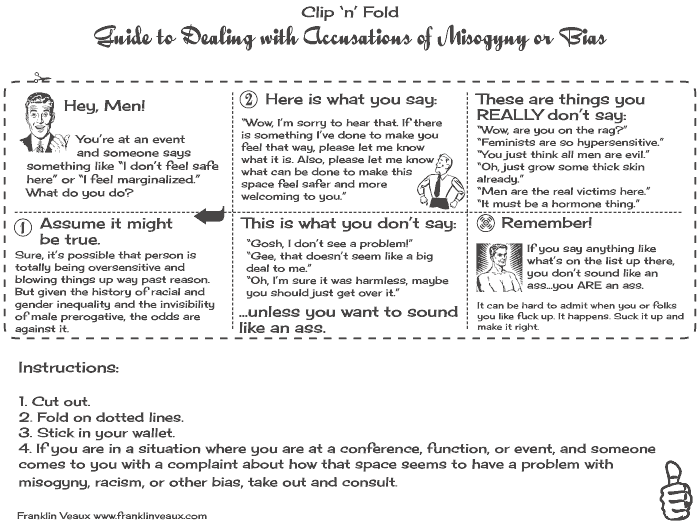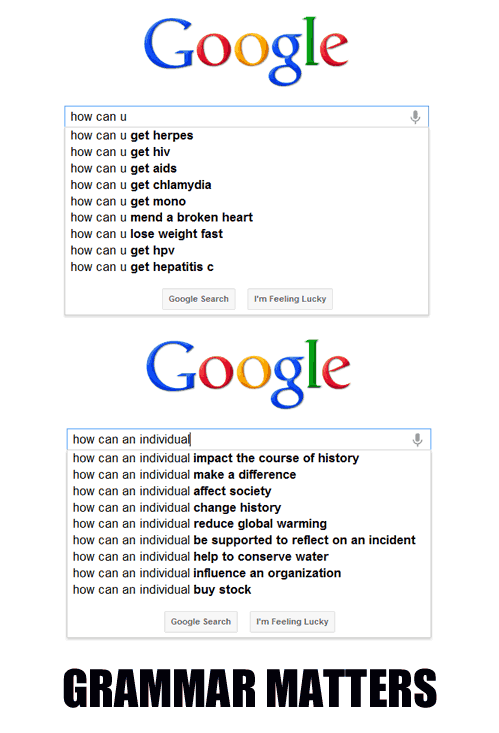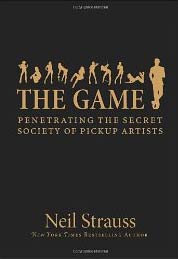A short time ago, I received an email from a writer for Men’s Health magazine who’d found me online and wanted to interview me about BDSM. Specifically, the interview was about how someone who’s read the book 50 Shades of Grey and found the ideas in it interesting might take the next steo and start exploring BDSM in a relationship.
The interview was focused mainly on maledom/femalesub dynamics, presumably because that’s the type of D/s described in 50 Shades. As of writing this, the issue of Men’s Health containing the interview isn’t on the newsstands yet, but I’ve received permission from the interviewer (@ peachesanscream on Twitter) to post a raw transcript of the interview here.
I’m writing an article for Men’s Health magazine as a beginner’s guide to BDSM. The idea behind it is that their girlfriend has read 50 Shades of Grey and they’ve experimented with sex toys, but now they want to go a bit deeper into BDSM.
I was wondering if I could please ask you a few quick questions and in return credit you in the article?
I realize that 50 Shades of Grey is credited with helping to popularize the idea of BDSM, but I don’t think it’s actually a very good introduction to the subject. It’s a fantasy story, and as fantasy it doesn’t paint a good picture of BDSM. It’s a bit like taking marriage and relationship advice from the Disney movie “Sleeping Beauty,” only with the added problem that many of the activities described in 50 Shades aren’t very safe.
Still, it is helping to open a dialog about BDSM. If it helps open the door for people who ‘ve always wanted to explore spicing up their relationship but haven’t been able to figure out how, that’s awesome.
Role play: how do you get started? How can a man act dominant without being mean or scaring his partner? Things like eye contact, instructions, body language etc?
As with any new thing in a relationship, you get started by talking. Sounds simple, right?
The hard part is that we live in a society that does not teach us how to talk openly about sex. It can be scary to talk about exploring something new; what if your partner says no? What if your partner thinks you’re weird? What if you try it but it doesn’t work? Does that mean your partner will reject you? How do you bring it up? Is it normal to want to do these things? It’s easier to just not talk about it.
Getting started with role-playing (or with any other kind of BDSM) requires being able to talk about it, and that takes courage. The best way I know of to start that conversation is directly, with “Hey, you know, I love having sex with you, and there are some things that I would like to try. I think it might be fun to explore ___. What do you think?” As tempting as it is to try to bring things up indirectly, by dropping hints, that almost never works. After all, if it’s something that’s too scary for you to talk about directly, why would it be reasonable to expect your partner to be willing to talk about it directly?
Communication is important because being dominant is different for every person. What one person thinks is sexy, another person would find intimidating and a third person would find mean. Some people like the idea of having their partners tie them down; other people don’t like that, but might want to be held down; still other people don’t want to be restrained at all, but might be turned on by the idea of being spanked; and other folks might not like any of that but be thrilled by their partner telling them what to do. All of those things count as “acting dominant.” It’s important for the dominant partner to learn what gets the other person going (and what doesn’t), because this sort of thing really only works if it works for everyone.
Talking about what turns you on and what you don’t like is the key to creating a safe, happy, healthy space to explore things like role-playing or dominance.
What sort of things should he say?
That’s something that depends on the people involved. The most wonderful thing about BDSM is there isn’t just one way to do it. It’s something that every couple creates themselves out of the things that turn them on.
Sometimes, a good way to have a conversation about what you’d like your partner to say or do can be started by reading erotica. If there’s some passage in 50 Shades or a letter in a letters magazine that revs your engine, sharing it with your partner and saying “I like this, what do you think?” can help get the conversation going.
Whatever he (or she; it’s not only men who are dominant!) might say, one important trick is to say it with confidence. A simple “Go into the bedroom and wait for me” spoken with confidence is a lot sexier than the most elaborate scenario spoken with hesitation.
One of the things I personally enjoy is taking my lover close and whispering in her ear exactly, in precise language, what I would like to do to her body. It’s fun to do this in public, say if we’re out running errands, to help prime the pump and get us both thinking sexy thoughts. When we get home, she will know what to expect.
Another thing I’m quite fond of is lying in bed close to my lover, snuggled up against her while I tell her how to touch herself.
As with anything else, different people have different tastes. Exploring, experimenting, and finding what works is the key.
What about verbal abuse? Is it ok to call women names eg. filthy slut, during sex? How does he know not to go too far?
One thing I believe quite strongly is that abuse is never appropriate.
Having said that, anything that is consensual and done for the pleasure of everyone involved isn’t abuse. If a woman is aroused by her lover whispering filthy things in her ear and calling her dirty names, that’s very different from a stranger on the street calling her the same names. The first one is not abuse; the second is.
I have had partners who like being called names during sex and partners who don’t. For me, it can be fun and sexy, if it’s something she likes. I can often tell how a lover will respond to this kind of verbal play by asking her “Do you like being a dirty girl?” while we’re making out. If she finds that arousing, it’s usually pretty obvious.
This is something that a lot of men have difficulty with. I’ve talked to many men who have partners who’d like to try dirty talking, but the men don’t know how to start. There are a couple of things that can make it hard: fear of feeling silly, and a deeply-ingrained belief that it’s wrong to talk to women that way.
Fortunately, both of those things tend to go away pretty quickly with practice. There’s nothing wrong with feeling a little awkward when you try something new. After all, nearly everything we do is awkward the first time; remember how awkward it was the first time you tried to ride a bicycle? And it’s never wrong to talk to a woman the way she wants you to talk to her. In fact, treating someone the way they want to be treated is, to me, the highest kind of respect. I can say all kinds of dirty things to a lover, call her all kinds of sexy names, and still keep in mind that it’s a form of role playing; it doesn’t actually mean that I don’t respect her, or that I think less of her.
What signs should he look out for that she’s offended? How can he tell if he’s gone too far?
That comes down to communication again, and to paying attention to what she likes and how she responds. The simplest way I know of to find out how far is too far, or what a woman does and doesn’t find sexy, is to ask her!
Different people have different tastes in dirty talk. Some women love being called a dirty, filthy slut, but don’t like words that go to their self-worth, like “stupid” or “worthless.” Some women love the C-word, some women hate it, and some women don’t have strong feelings one way or the other. And, of course, some women don’t care for dirty talk at all.
It gets a bit complicated because most of us, no matter how well we know ourselves, have a hard time predicting how we will react to something new. I’ve known women who believed they wouldn’t like dirty talk, but who found it arousing when they were turned on. I’ve known women who liked reading stories involving dirty talk but didn’t like it in real life. That’s all a normal, natural part of human variability.
So the only way I know of to stay within the lines and keep it fun and exciting is to go slowly and to pay attention. Start simply–“Are you a dirty girl?” Invite a response. And, as always, talk about it.
Do you have any other tips for how a man can play the dominant role as a beginner in BDSM?
Whenever you try anything new, it won’t always go 100% the way you expect it to 100% of the time. Be willing to be surprised. There may be times when your partner has an unexpected reaction to something, and you have to stop what you’re doing. That’s OK. It doesn’t mean you’re doing things wrong; it just means that when you explore something new, things won’t always be perfect.
A lot of people who talk about BDSM talk about it from the perspective of taking care of the submissive partner and being aware of the submissive partner’s limits. But it’s also important to understand that being in the dominant role can make you feel vulnerable, too. Dominants also have limits, and it is possible for something to happen that triggers a reaction in the dominant partner. The people involved should keep the limits and responses of the dominant in mind, too.
BDSM is about exploring pleasure and trust together. When you look at it from the outside, it can seem like one person doing things to another person, but it’s really more about two people doing things together, but in different roles. The goal is to have fun. If you’re doing that, it’s all good.
Unlike what you tend to see in books and movies, BDSM doesn’t have to be serious all the time. Sometimes, it can be very silly. There’s a game I like to play called the “two frogs” game. A frog has two eyes and four legs, so two frogs have four eyes and eight legs. I’ll say “Three frogs! One frog! Four frogs!” and if she doesn’t respond instantly with the right number of eyes and legs, she gets spanked. It’s very silly, but also a lot of fun.
How do you broach the idea of using stronger sex toys such as nipple clamps on your (female) partner? (( we’re assuming that they’ve already experimented with sex toys at this point. So it’s not totally virgin **ahem** ground)) Should you start by squeezing her nipples during sex, then asking her after? Is there a smooth way to do this?
I’m a big fan of communication in a relationship, as you’ve probably guessed. A good general rule abut sex that I’ve found works pretty well is don’t just do things and hope for the best; talk about them first. You can’t always be expected to know where someone’s boundaries are, and you don’t want to find them by accident.
When it comes to anything, from using a vibrator to using nipple clamps to chaining my partner to the wall and spanking her until she’s squirming, I find out whether or not she’s interested by talking to her about it. A great way to do this is by discussing fantasies (and this is a two-way street; talk about the things that interest you, and also encourage her to talk about the things she fantasizes about). And remember that being receptive is also a two-way street…if you’d like her to be open to the idea of having nipple clamps on her, you can’t freak out if you discover she’d like to use them on you!
A lot of people ask me “How can I get my girlfriend to do so-and-so?” I think that’s the wrong approach. You don’t GET your partner to do things for you; this person is your lover, not a circus animal. Instead. you talk about things you’d like to explore, you listen when she talks about things she’d like to explore, and you find the overlap.
How do you broach the idea of trying anal sex? Is there a non-offensive way to do this? Should you try touching her there first to see how she’d react?
People tend to be touchy about their asses. Legions of bad advice columns in Cosmo magazine aside, I don’t think it’s a good idea to go poking at a lover’s ass and hope for the best.
Is there a non-offensive way to ask? Sure! “I’m interested in exploring anal sex. How do you feel about it?” Talking directly and openly about what interests you is never offensive, provided you’re okay with hearing “no” as an answer. To me, it only becomes offensive if you have an expectation that the answer has to be “yes.”
And remember the part I said about being receptive to what she has to say if you want her to be receptive to what you have to say? If she says something like “You know, I’ve always wondered if it would be fun if I stick my finger up your bum while I give you a blowjob” and you freak out about that idea, then you can’t really expect her to be calm about the things you suggest. It’s okay if that idea doesn’t appeal to you, just like it’s okay if anal doesn’t appeal to her; if she suggests something that doesn’t work for you, a simple “Well, that doesn’t really do it for me” is enough.
How can you gain her trust enough to get her to cede control to try light bondage? Would it be something like agreeing safe words before? Or using ties that don’t tie up too tightly? Or maybe letting her try it on you first or using your hands?
I don’t think that you “get” someone to trust you. Instead, I think people trust you when you are a trustworthy person. There is no secret to getting people to trust you other than being a person who deserves trust.
Part of the way that you earn trust is by respecting your partner’s boundaries. Part of it is by treating your partner with respect and compassion, even if she says things that surprise you or that turn you off. And I shouldn’t really have to say this, but part of it is by being a person who’s honest, someone who can be relied on to behave with integrity.
I had an acquaintance many years ago who was a serial cheater; he would brag about all the women he’d cheated with, and he tended to go through partners pretty quickly. He always wanted to try bondage, but he never found a woman who would say “yes.” I think on some level all the people he slept with knew that he couldn’t be trusted. One of his partners, for a brief time, was a model. I was a photographer at the time, and I did a bondage photo shoot with her. He was very surprised when he saw the pictures, because he’d asked her about trying bondage and been told “absolutely not.”
I think that people often are apprehensive about trying new things in the bedroom, and bondage is no exception. Starting with light bondage is perfectly appropriate, as is agreeing on a code word that means “untie me right now.” I also advise that people keep a pair of bandage scissors handy when they explore for the first time. You can get these for a couple of dollars at any drug store. They have one pointed blade and one rounded blade, and they’re designed to be slid underneath a bandage to cut it off without risking cutting the skin. If you get into trouble with bondage, they’ll cut your partner free in seconds.
Being willing to respect a partner’s limits, being willing to show that you are trustworthy, being willing to suggest ideas without trying to pressure your partner into saying “yes,”and being willing to talk about what you can do if things go wrong goes a long way toward creating a safe environment for exploring bondage.
Are there any important points that I should include?
Safety!
Safety is a bit tricky, because sometimes what feels safe and what is safe are miles apart.
For example, when we think about bondage, a lot of folks think “pink fuzzy handcuffs.” But I know several serious, die-hard, long-term kinksters who won’t play with handcuffs because they’re just too dangerous. A lot of people who first dabble with tying their lovers up might use silk sashes or nylon stockings, because they feel less intimidating than using ropes or leather cuffs. But these, too, are dangerous.
Handcuffs are dangerous because they are completely inflexible and they put a lot of force on a very small area. If you struggle when you’re wearing handcuffs, it can be surprisingly easy to do permanent damage to the bones or nerves in your wrist, and it can happen very quickly.
Silk and nylon can have a tendency to pull tight, making them almost impossible to untie. They can also cut off circulation without warning. When you get into trouble, it can be hard to get them off quickly. Ropes are a lot safer for bondage, which is why kinksters use them.
It’s usually a good idea for people exploring BDSM to create a “safe word,” which is a special word that means “stop, really, I mean it.” Especially if you’re trying role play scenarios where words like “no” and “stop” are part of the role play and don’t really mean “no” or “stop.”
There are a lot of resources out there for people who want to learn how to explore these things safely and respectfully. My own Web site at www.xeromag.com has a beginner’s guide to BDSM and a list of resources, and there are many more as well.


 It was no picnic for me growing up there. I was the stereotypical geek as a kid; I was into model rocketry, and I owned a TRS-80 computer, the only computer of any sort in a 40-mile radius. (I know this because the only other computer within any distance was an Apple II belonging to the owner of the business my mother worked at in the next town over, about 45 minutes away; he used it to do bookkeeping.)
It was no picnic for me growing up there. I was the stereotypical geek as a kid; I was into model rocketry, and I owned a TRS-80 computer, the only computer of any sort in a 40-mile radius. (I know this because the only other computer within any distance was an Apple II belonging to the owner of the business my mother worked at in the next town over, about 45 minutes away; he used it to do bookkeeping.) After my first year in college, I made a conscious decision: I did not want to be introverted or shy any more. I deliberately and systematically set about learning the skills that would get me there. I started choosing different kinds of people in my social circle. If I found a social situation that made me uncomfortable, I deliberately kept putting myself in it.
After my first year in college, I made a conscious decision: I did not want to be introverted or shy any more. I deliberately and systematically set about learning the skills that would get me there. I started choosing different kinds of people in my social circle. If I found a social situation that made me uncomfortable, I deliberately kept putting myself in it. In the 1990s, which is positively antediluvian as far as the Internet goes, I started working on a Web site. (The Wayback Machine only started capturing the poly section of the site in 2000, for reasons I don’t completely understand.)
In the 1990s, which is positively antediluvian as far as the Internet goes, I started working on a Web site. (The Wayback Machine only started capturing the poly section of the site in 2000, for reasons I don’t completely understand.) When a person wears a wedding ring and says in casual conversation “My wife and I went to dinner last night,” that person is validating those social conventions. He could say that it’s nobody’s business how he conducts his romantic affairs, of course; but the simple act of wearing a wedding ring is a public declaration of a very specific kind of relationship. And it’s hard to talk about the things we do, even casually, without talking about the people we do them with, and what those people’s relationships are to us.
When a person wears a wedding ring and says in casual conversation “My wife and I went to dinner last night,” that person is validating those social conventions. He could say that it’s nobody’s business how he conducts his romantic affairs, of course; but the simple act of wearing a wedding ring is a public declaration of a very specific kind of relationship. And it’s hard to talk about the things we do, even casually, without talking about the people we do them with, and what those people’s relationships are to us. Apparently, a prominent blogger named Rebecca Watson was harassed at TAM last year. And the fallout from her complaint about it, which I somehow managed to miss almost entirely, are still going on.
Apparently, a prominent blogger named Rebecca Watson was harassed at TAM last year. And the fallout from her complaint about it, which I somehow managed to miss almost entirely, are still going on.








 I think there are also signs of this objectification in the expectations for the way people behave after a romantic breakup. When a relationship–especially a sexual relationship–ends, there’s a social expectation that the people involved will revile each other; ex-partners who are on good terms with one another tend to be treated as something of an aberrant curiosity, like something we should be looking at from behind a roped-off area in a circus sideshow somewhere. Part of that is certainly that the ending of a relationship can be painful, and we are not really taught how to process emotional pain well; but part of it does point to the notion that if we break up with someone, it’s because that person failed in his or her duties to meet our needs, and why would we want to keep them around? After all, isn’t that a bit like hanging on to a broken toaster or something?
I think there are also signs of this objectification in the expectations for the way people behave after a romantic breakup. When a relationship–especially a sexual relationship–ends, there’s a social expectation that the people involved will revile each other; ex-partners who are on good terms with one another tend to be treated as something of an aberrant curiosity, like something we should be looking at from behind a roped-off area in a circus sideshow somewhere. Part of that is certainly that the ending of a relationship can be painful, and we are not really taught how to process emotional pain well; but part of it does point to the notion that if we break up with someone, it’s because that person failed in his or her duties to meet our needs, and why would we want to keep them around? After all, isn’t that a bit like hanging on to a broken toaster or something? My sweetie
My sweetie  I recently saw a brilliant example of the Magic Genital Effect in a poly forum I sometimes read. A person in that forum argued that a big problem with polyamory is that the secondary will eventually want to be recognized as an equal partner, and that’s bad because it might cause disruption in the “primary couple” and in the primary couple’s social circle if they have friends who aren’t poly. He argued that an existing couple has a history together, and anything that might cause disruption to that is bad and must be avoided.
I recently saw a brilliant example of the Magic Genital Effect in a poly forum I sometimes read. A person in that forum argued that a big problem with polyamory is that the secondary will eventually want to be recognized as an equal partner, and that’s bad because it might cause disruption in the “primary couple” and in the primary couple’s social circle if they have friends who aren’t poly. He argued that an existing couple has a history together, and anything that might cause disruption to that is bad and must be avoided.